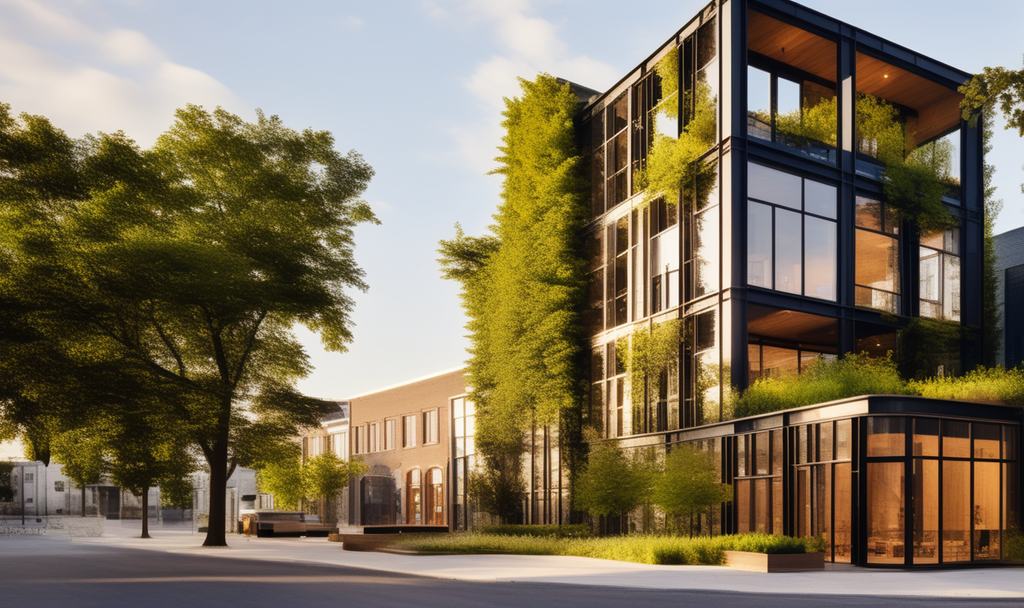As urban landscapes evolve and societal needs change, the concept of adaptive reuse has gained prominence in architectural circles. Adaptive reuse involves the transformation of existing structures for purposes other than what they were originally designed for. This innovative approach not only breathes new life into aging buildings but also contributes to sustainable development. In this blog post, we’ll explore the essence of adaptive reuse, its benefits, and notable examples that showcase the transformative power of repurposing.
Understanding Adaptive Reuse
Adaptive reuse is a multifaceted concept that marries preservation with innovation. Rather than tearing down old structures, architects and designers leverage their existing frameworks to accommodate new functionalities. This not only preserves the historical and architectural value of the buildings but also minimizes the environmental impact associated with demolition and new construction.
The key to successful adaptive reuse lies in the ability to reimagine spaces and repurpose them in ways that align with contemporary needs. Whether it’s converting an old factory into loft apartments or turning a historic school into a vibrant community center, the possibilities are as diverse as the buildings themselves.
Benefits of Adaptive Reuse
- Preservation of Cultural HeritageAdaptive reuse allows for the preservation of cultural and historical landmarks. By repurposing these structures, communities can retain a tangible connection to their past, fostering a sense of identity and continuity.
- Environmental SustainabilityThe environmental benefits of adaptive reuse are substantial. Reusing existing buildings reduces the demand for new construction materials and minimizes the energy required for demolition. This sustainable approach aligns with the principles of green architecture and contributes to a more eco-friendly urban environment.
- Economic ViabilityFrom a financial standpoint, adaptive reuse often proves more cost-effective than new construction. Renovating existing structures tends to be less resource-intensive, making it an economically attractive option for developers and investors.
Notable Examples of Adaptive Reuse
- The High Line, New York CityThe High Line, an elevated park on Manhattan’s West Side, is a prime example of adaptive reuse. What was once an abandoned railway has been transformed into a green oasis, offering a unique urban park experience. The adaptive_reuse of The High Line not only preserved an industrial relic but also created a dynamic public space.
- The Tate Modern, LondonThe Tate Modern, one of the world’s most renowned contemporary art museums, occupies the former Bankside Power Station. The adaptive_reuse of this industrial structure not only provided a fitting setting for modern art but also became an iconic example of repurposing industrial architecture for cultural enrichment.
Challenges and Solutions in Adaptive Reuse
While the benefits of adaptive_reuse are clear, it is not without its challenges. The structural limitations of older buildings, zoning regulations, and the need to integrate modern amenities can pose hurdles. However, these challenges are not insurmountable.
Innovative engineering solutions, creative design approaches, and collaboration between architects, preservationists, and local authorities can address these challenges. For instance, retrofitting old buildings with energy-efficient systems and ensuring compliance with current safety standards are crucial aspects of successful adaptive_reuse projects.
Embracing Adaptive Reuse in Urban Planning
As cities grow and evolve, incorporating adaptive_reuse into urban planning becomes increasingly important. Municipalities can incentivize developers to choose adaptive_reuse over new construction through zoning policies and financial incentives. This approach not only contributes to the character of neighborhoods but also supports sustainable and resilient urban development.
If you have any question about this article, please contact us …
If you want, you can learn more about this through the Cambridge dictionary.
Conclusion: The Future of Adaptive Reuse
Adaptive_reuse stands as a testament to the intersection of tradition and innovation. It not only breathes new life into old structures but also fosters a sustainable and resilient approach to urban development. As we look to the future, embracing the principles of adaptive_reuse can play a pivotal role in shaping cities that are not only dynamic and functional but also rooted in their cultural and historical foundations. By reimagining the potential of existing structures, we pave the way for a more sustainable and harmonious urban landscape.

